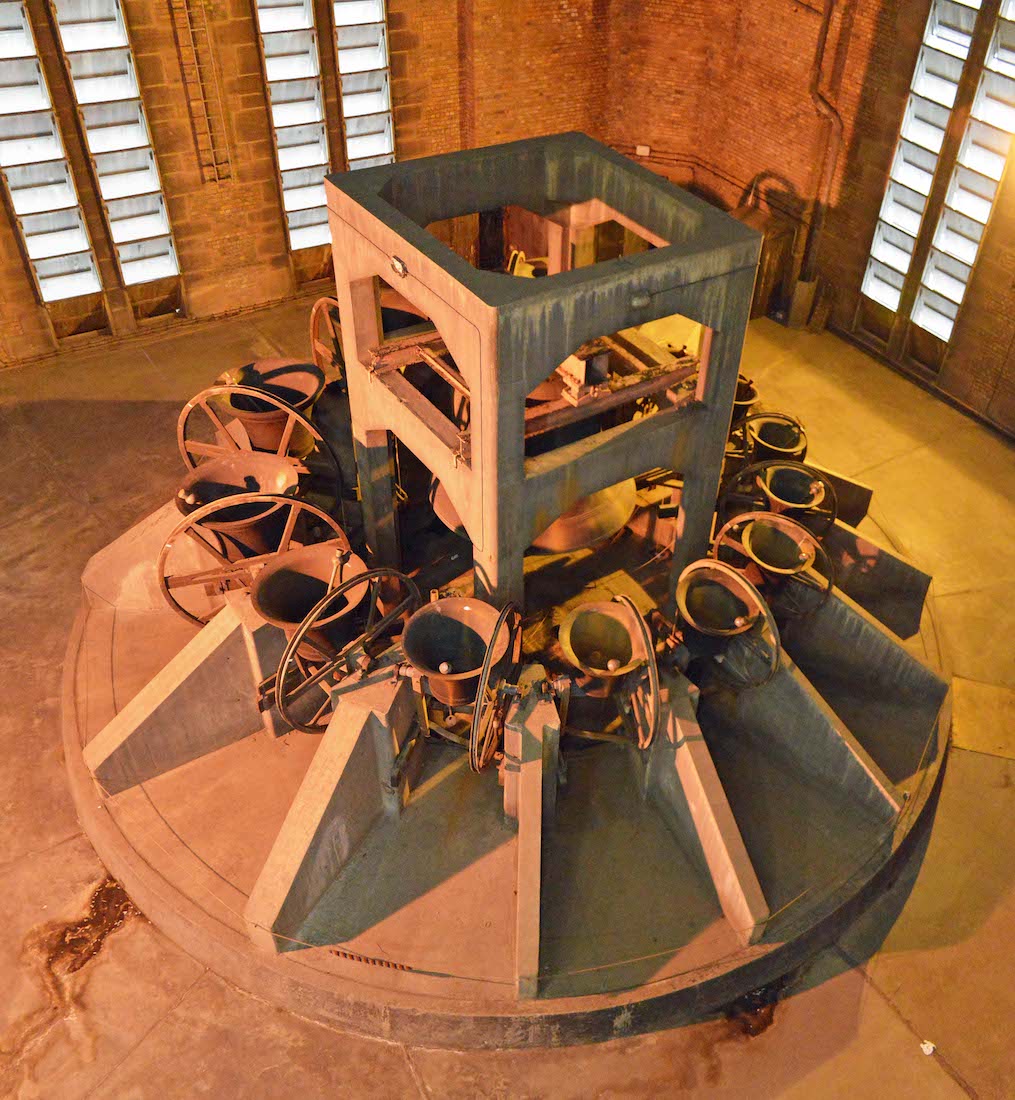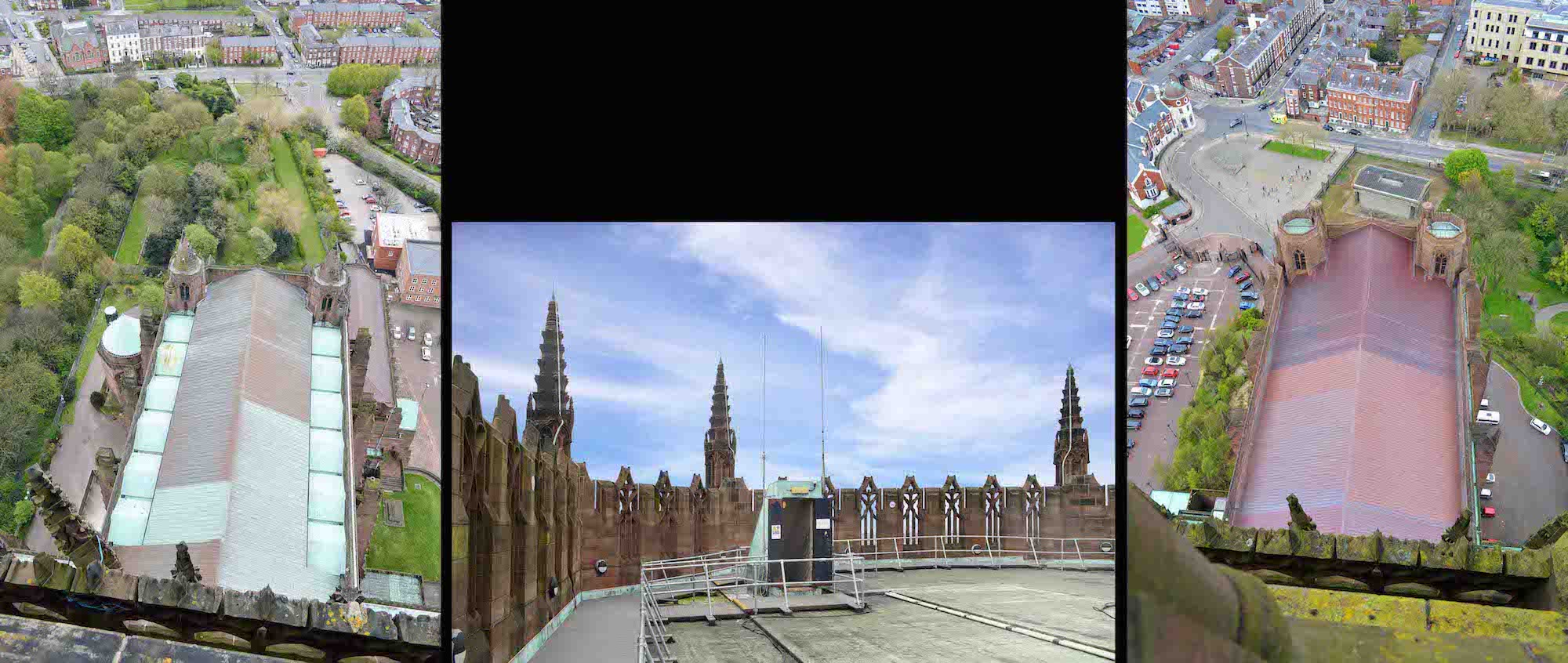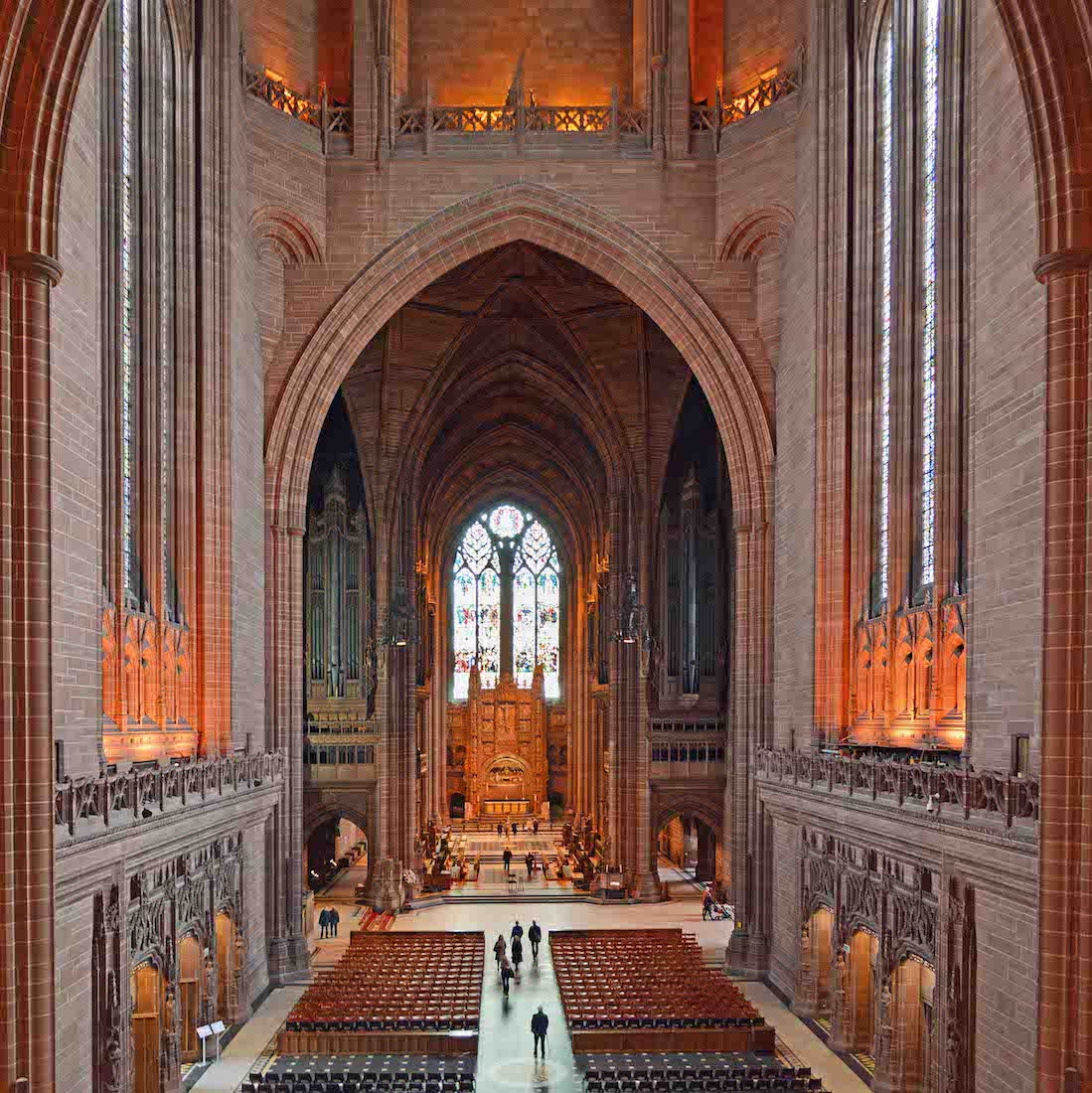
Sited high up and accessible only by lift is this unique museum of ecclesiastical embroidery. It consists of a large, internal gallery at the west end of the cathedral, some 16m (52.6ft) above the cathedral floor level. Beautifully displayed are examples worked mainly in the Victorian and Edwardian period, formerly the collection of Elizabeth Hoare. PLAN
102. GALLERY AND VIEW OF WEST WINDOW
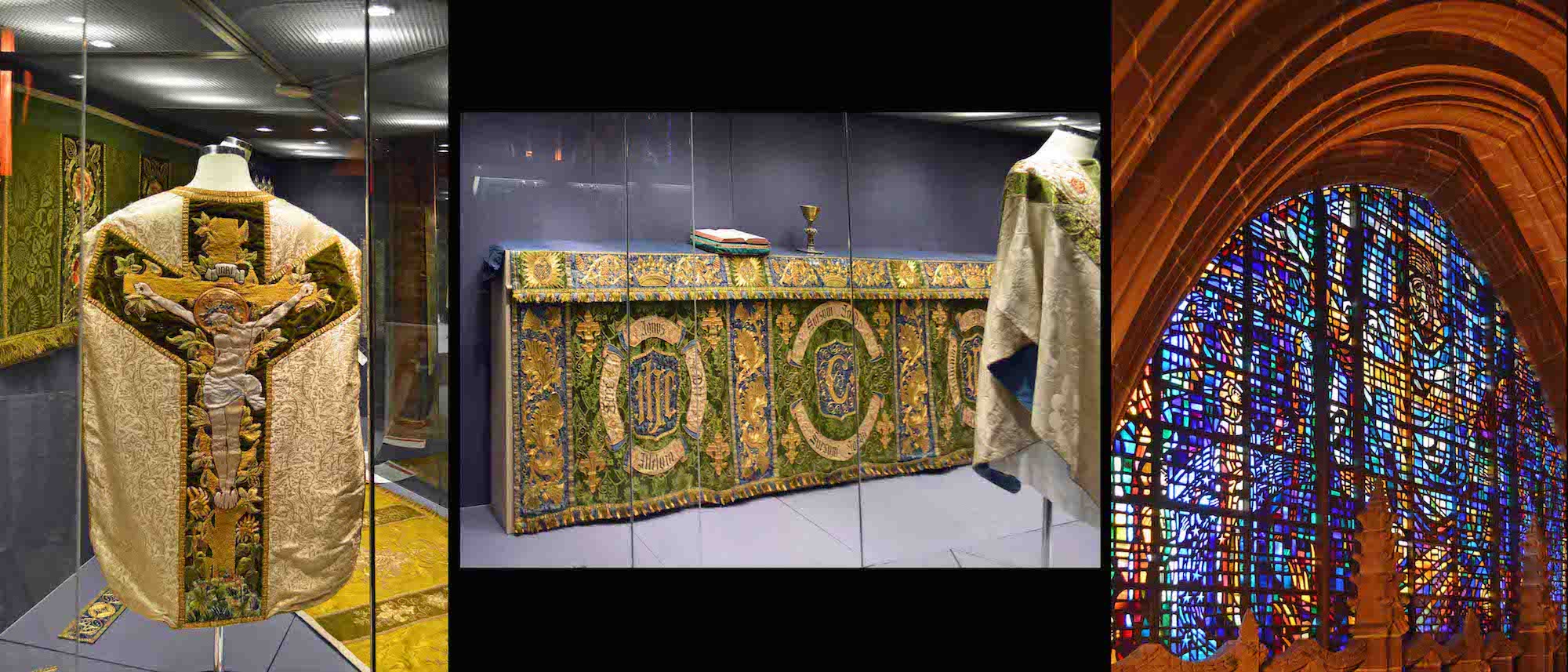
The gallery houses an exquisite and unique collection of Victorian and Edwardian ecclesiastical embroidery, and offers views of the Cathedral interior from a great height – an ideal visit for those whose passions are embroidery and architecture, both modern and traditional.
103. TOWER BELLS
The journey from the 2nd stage lift brings us to the bell tower itself from where we begin ascending the 108 steps. This chamber houses the highest (67m/219ft) and heaviest (31.5 tonnes/31 tons) ringing peal of church bells in the world. These magnificent bells were a bequest from Thomas Bartlett, a successful Liverpool businessman. Thomas left money in his will for a ring of 12 bells for the new Cathedral which was under construction. He died in 1912, more than a quarter of a century before the bells which bear his name were cast, and 39 years before they were first rung.
104. VIEWS FROM THE TOWER
The main roof section (101m/ 300 ft) above ground floor level and over 150m (500ft) above sea level offers panoramic views across the city as it spreads like a giant jigsaw of buildings, roads, parks and other landmarks. As well we may just see Blackpool Tower approx 80km (50 miles) away. The circular Metropolitan Cathedral of Christ the King is 800m (half a mile) away. And close below us are the roofs of the East end (left) and the Well (right).
105. FINAL VIEW
It is now time for us to leave the Cathedral.
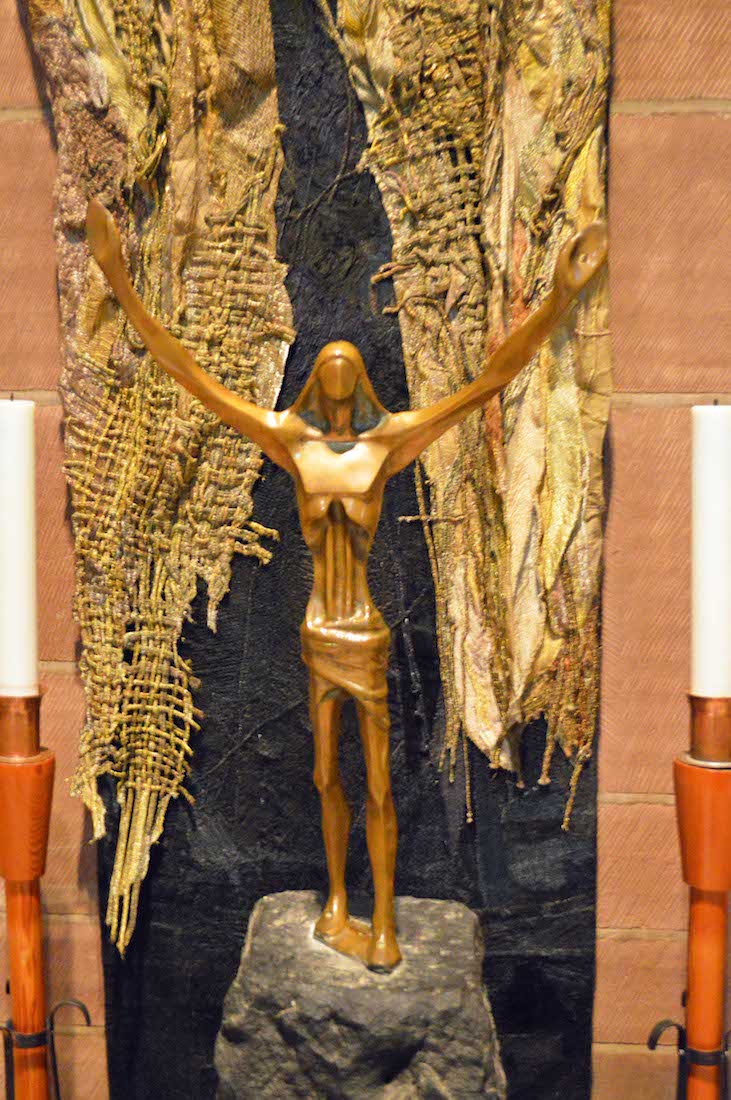
CONCLUSION
Visiting this enormous cathedral was a great pleasure, but it also provided a number of photographic challenges. I am disappointed with many of my window photos: the sheer size of the windows really required multiple images stitched together to attain overall sharpness. Too late now!
I am happy to receive constructive comments or corrections concerning this website. The best websites are the ones which have no errors! I am grateful to my wife Margie who has proof-read these pages.
Liverpool Cathedral has an interesting website, and much of the textual information about the Cathedral on my site has come from there. I am happy to acknowledge this source, and also Wikipedia.
The link for the Cathedral website is: http://www.liverpoolcathedral.org.uk/
The photographs which appear on this site can also be found in higher resolution at:
https://www.flickr.com/photos/paulscottinfo/sets/
Paul Scott Site created 08 / 2018 reformatted 04 / 2020

